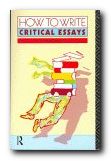sample from HTML program and PDF book
1. Grammar checkers will help you to avoid some of the most common stylistic pitfalls. These include over-long sentences, cloudy grammar, unrelated clauses, bad punctuation, and dangling participles [which can be very painful].
2. These programs are generally designed to encourage clear, plain prose. This is a good model to follow for most forms of writing. Be prepared to split up over-long sentences or to simplify the syntax of chained clauses.
3. Most checkers give you the option to adjust settings for different types of writing. For instance, they will allow you to select a formal style, in which any mistakes in conventional grammar are corrected. Alternatively, you might choose an informal style as acceptable [not a good idea]. You could even choose to accept more jargon if you were writing for a specialist readership.
4. For academic writing, you should choose a formal writing style. This will throw up queries on anything which is shaky or unorthodox. It will also put a limit of something like twenty or thirty words on sentence length.
5. The checker will present alternate choices of words for what it regards as ‘mistakes’. Do not blindly accept them. The near-synonyms offered may be drawn from different contexts. If necessary, take the trouble to look up the meanings of these words in a dictionary.
6. Some grammar-checkers incorporate spelling-checkers. Use these in the same way – with a combination of patience and scepticism.
7. Grammar-checkers are a fairly recent development. They are not yet very sophisticated. Moreover, grammar and syntax are subtle and complex matters. It is not always possible for a machine to make sensitive distinctions between linguistic usages which represent tasteful or even accurate discrimination.
8. It has to be said that they are also notoriously unpopular, because they seem to be throwing up ‘mistakes’ in your work. But if you can overcome your irritation, you are very likely to improve the clarity of your writing by using one.
© Roy Johnson 2003
Buy Writing Essays — eBook in PDF format
Buy Writing Essays 3.0 — eBook in HTML format
More on writing essays
More on How-To
More on writing skills
